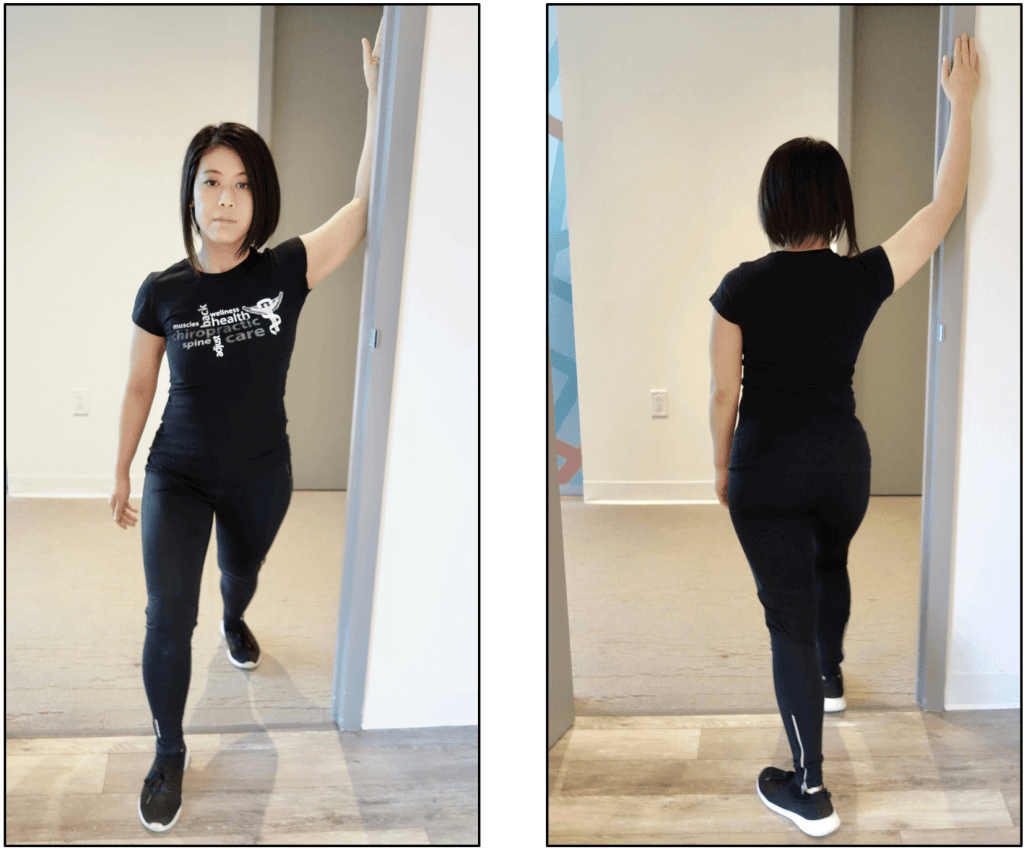
Chiropractor / Registered Massage Therapist
Don’t have a shoulder good enough for someone to lean on? – Lets fix you up!
What is a Rotator Cuff ?
The rotator cuff complex consists of a group of muscles and tendons that supports and stabilizes the shoulder joint, which firmly aligns the humerus (upper arm bone) to the shallow socket of the shoulder. 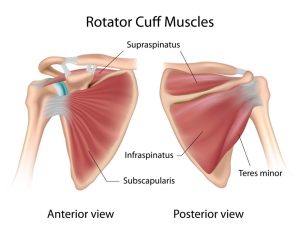
How Does Rotator Cuff Injuries Happen?
Typically people who repeatedly perform overhead movements in their job or sports are more prone to these injuries. Risk of rotator cuff injuries increase with age.
What is a Rotator Cuff Injury?
The rotator cuff muscle group is made up of the supraspinatus, infraspinatus, teres minor and subscapularis. The function of the rotator cuff is to stabilize the shoulder. When you get a rotator cuff injury, it means that you have strained all or some of the muscles. Overuse or injury to these muscles will lead to a tight rotator cuff, resulting in instability or muscular imbalance. A rotator cuff injury can cause dull pain in the shoulder, worsening when sleeping on the involved side as well as raising your arm above your head.
Why is Rehab so Important for this type of injury?
The shoulder joint is built to have great mobility which is why it is a very shallow joint that is only held on by muscles. When an injury occurs to the muscle group, the muscles cannot stabilize the joint properly leading to imbalanced and weak rotator cuff muscles due to abnormal muscle firing patterns. When there is an imbalance in this group of muscle, this can cause rotator cuff impingement symptoms. The goal of rotator cuff rehab is to strengthen the rotator cuff muscles and correct the scapular rhythm of the shoulder.
Recovery Expectation and Progression
When the tendon of the muscle is damaged, the rehab recovery timeline ranges between 8-12 weeks. Damage to the muscle belly takes about 4-6 weeks to recover.
Rotator Cuff Rehabilitation
1. Talk to a Healthcare Professional
It is very important for you to see a healthcare professional before starting your own rotator cuff rehab routine because sometimes your shoulder pain does not stem from your shoulder but from elsewhere. In some cases, imaging may be required to further assess the damage in the area
2. Pendulum Exercise
This exercise helps with increase shoulder range of motion 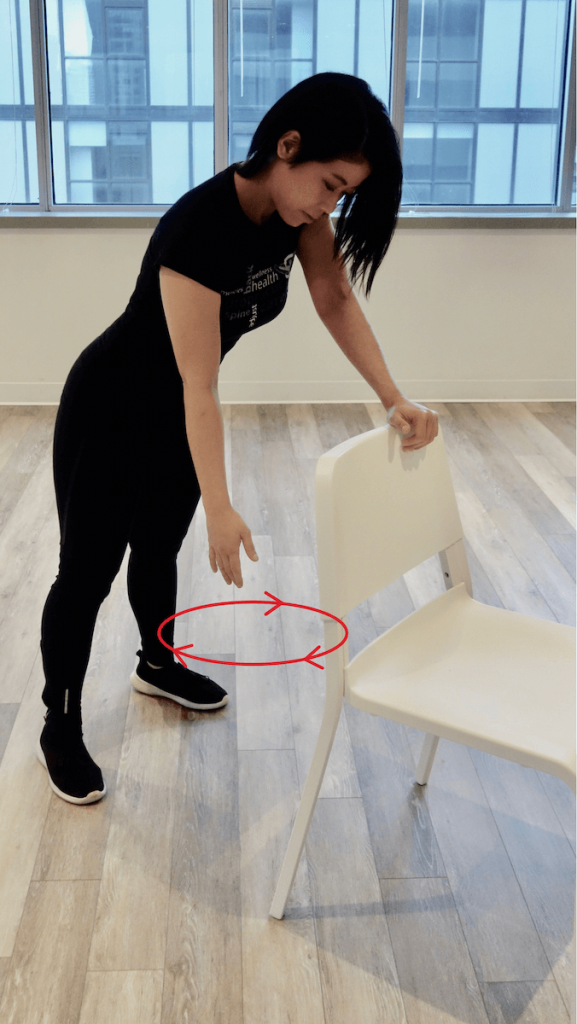
- Bend forward at the waist and balance with the good arm.
- Let the injured shoulder relax with gravity.
- Move the body back and forth, side-to-side and circular. Allow the momentum of the body to swing the relaxed arm.
3. Door Frame Stretch
This exercise helps reduce muscular tension in the chest which pulls the shoulders forward
Part 1
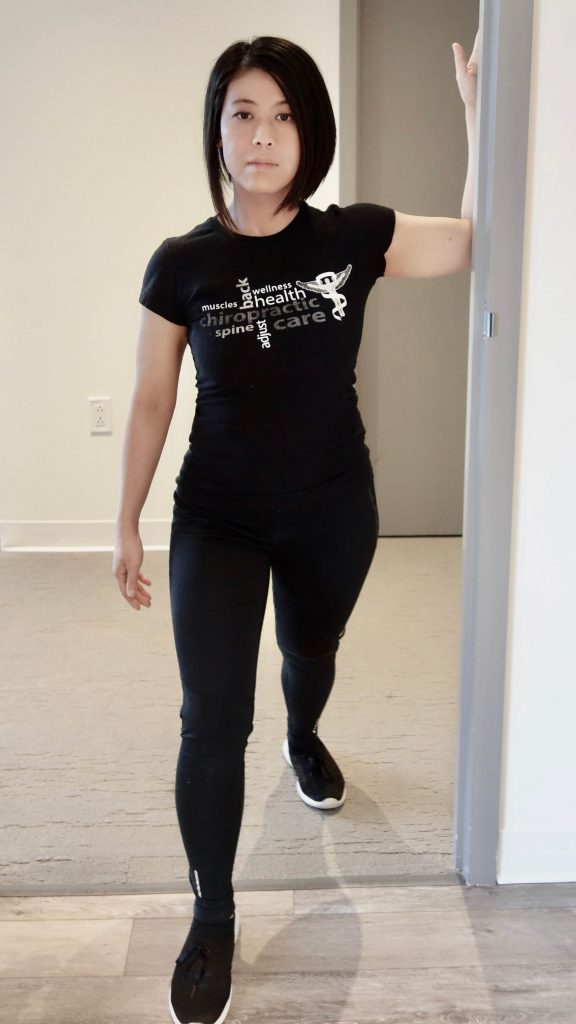
- Bend your elbow at 90 degrees with your hand in the air.
- Put your elbow and hands on the frame of the door and lean forward.
- The stretch should be felt in the front of your shoulder and chest.
- Hold for 30 seconds and perform 3 times daily.
Part 2
- Raise your shoulder higher so your elbows are at face level.
- Repeat the above.
4. Shoulder Retraction and Depression

This exercise activates the mid and lower trapezius muscle to stabilize the shoulders
- Squeeze the shoulders back and down towards your back pants pocket.
- Hold for 7 seconds, perform 3 sets of 10 daily.
Push up Plus Modified
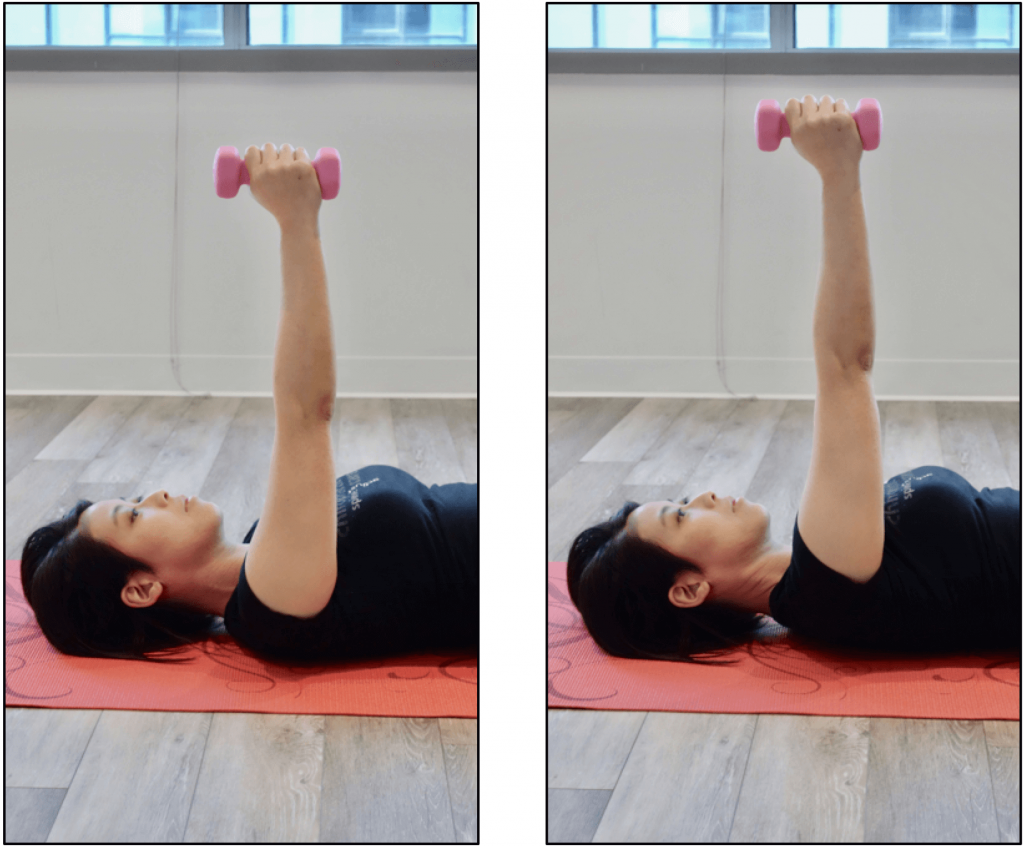
This exercise activates the serratus anterior to help stabilize the shoulder blade onto the rib cage.
- Lay on your back with your arm extended in front of you.
- Reach forward with your arm until your shoulder lifts off from the floor.
- Hold for 7 seconds, perform 3 sets of 10 daily.
Stop and consult your practitioner if you experience any pain or discomfort while doing any of these exercises. If you have any questions regarding this article, feel free to reach out to us!
Written By:

Dr. Karen Ngo is a Chiropractor and RMT at Yonge and Eglinton who provides chiropractic care, massage, and acupuncture to patients and dancers.
View Profile


